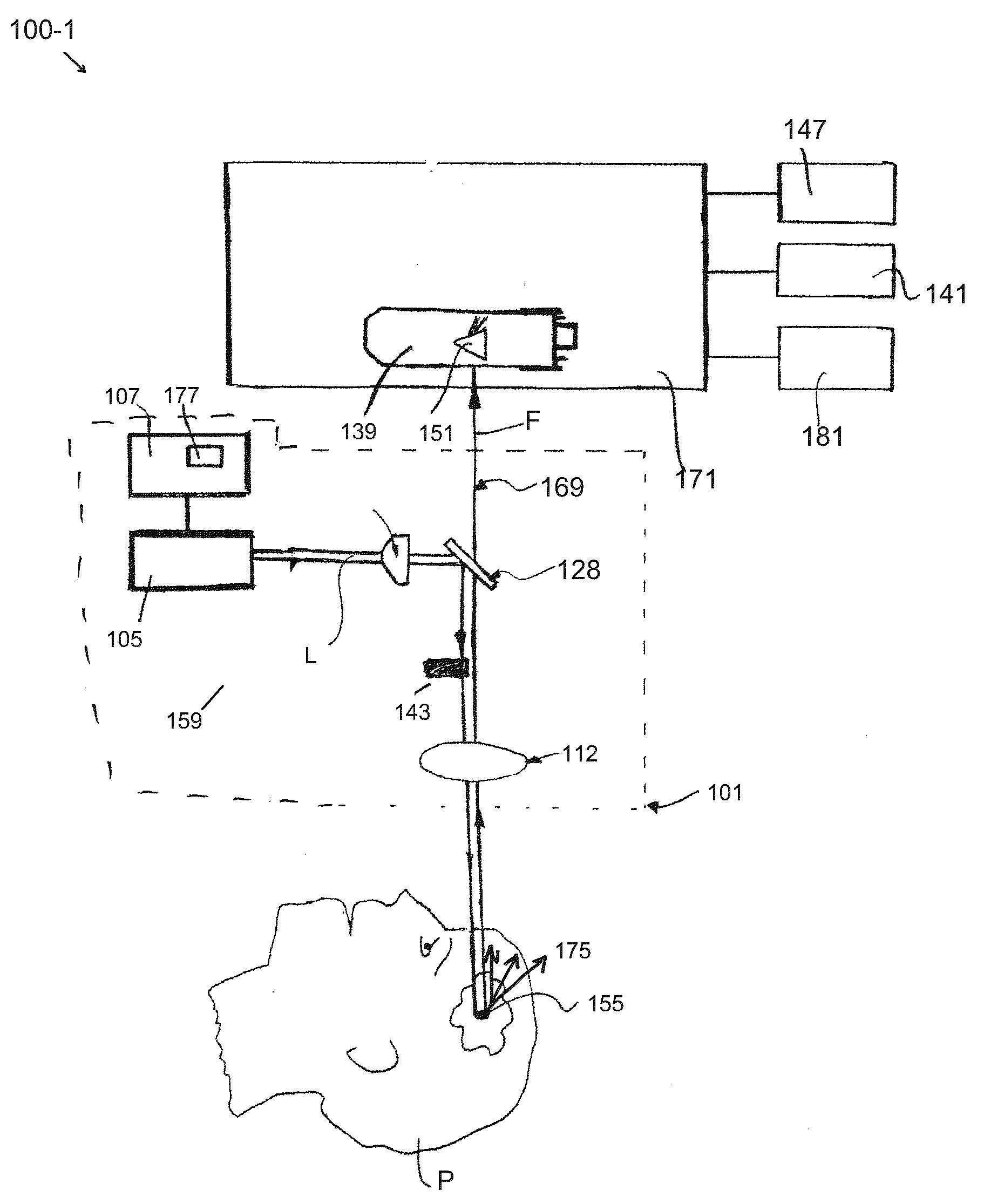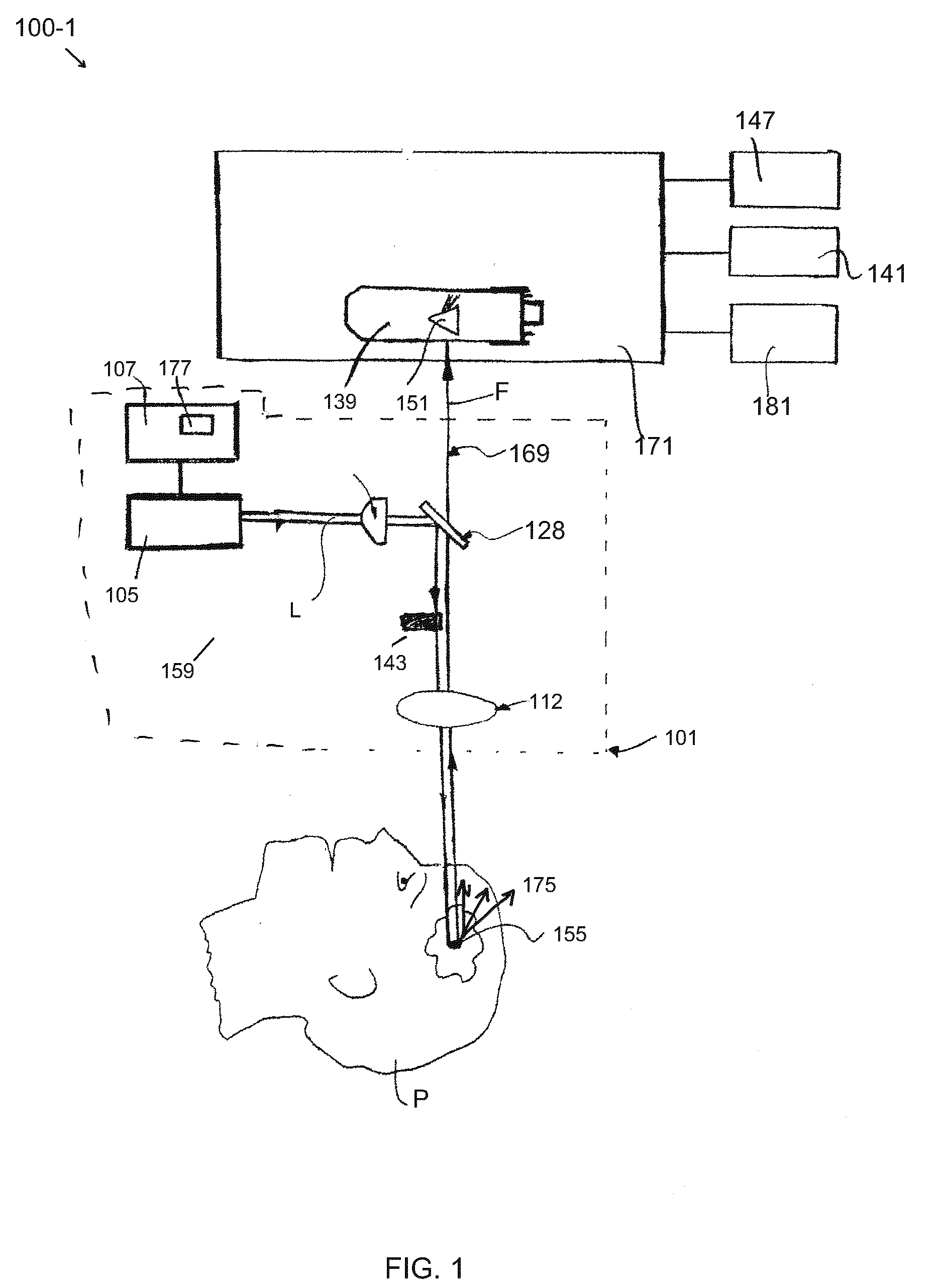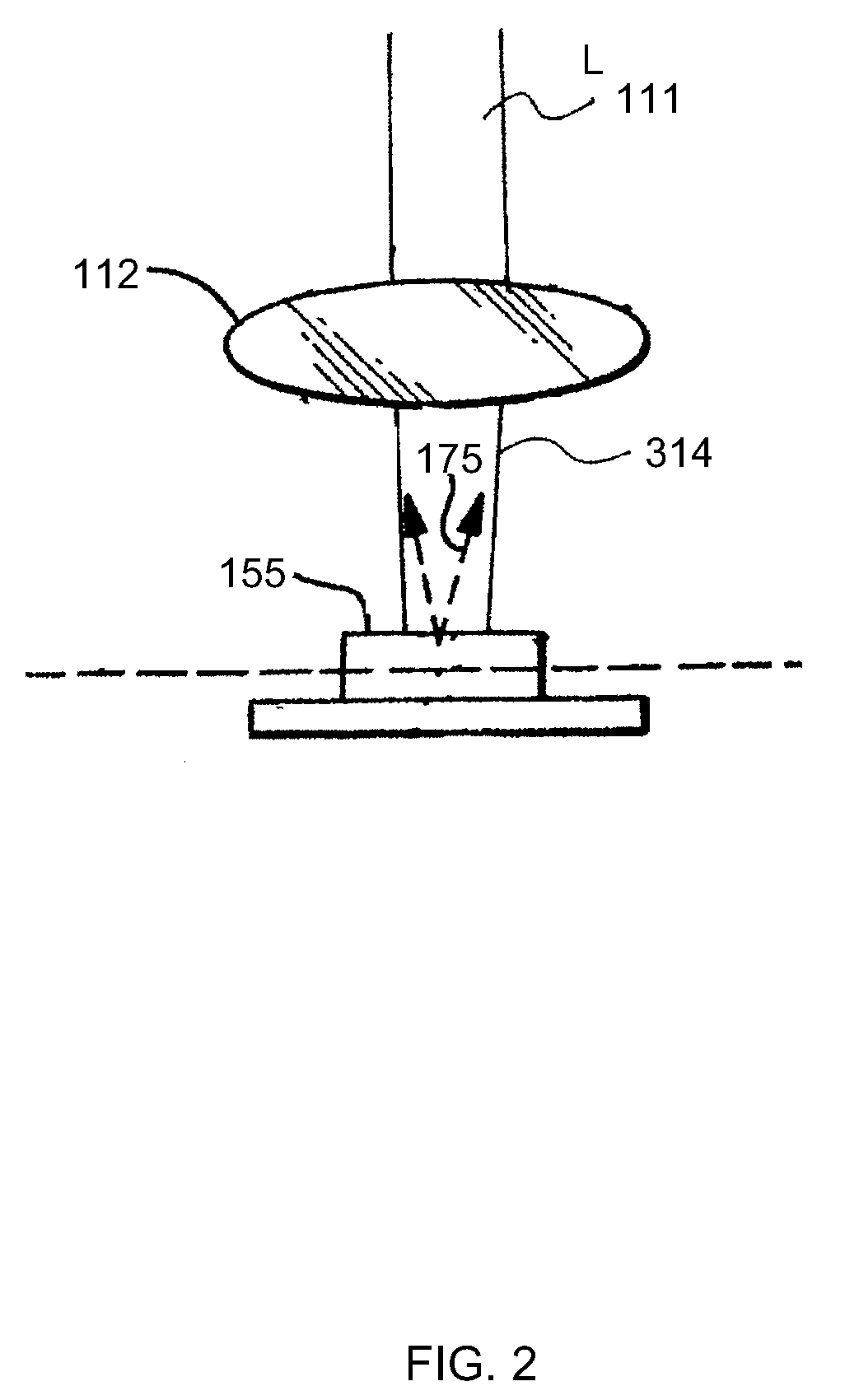Non-imaging, weakly focused fluorescence emission apparatus and method
a fluorescence emission and weak focus technology, applied in the field of non-imaging, can solve the problems of limited in the capacity to generate high-resolution tissue images, limited in the scattering of incident laser pulses, and limited in the useful detection and imaging of multi-photon excited fluorescence deep within strongly scattering media, so as to improve background discrimination and focus precision, the effect of reducing light intensity and maximizing the generated signal
- Summary
- Abstract
- Description
- Claims
- Application Information
AI Technical Summary
Benefits of technology
Problems solved by technology
Method used
Image
Examples
Embodiment Construction
[0012]Embodiments of the invention are generally directed to apparatus and methods for determining, detecting, and analyzing an amount of fluorescence (or fluorophore concentration) that is excited by non-imaging fluorescence emission from a target medium. The disclosed apparatus and methods are less susceptible to collection and measurement errors due to scattering and other disadvantageous attributes associated with conventional MPM and SHG imaging techniques, referred to above and as known in the art. As is known, in a conventional multiphoton imaging system, the excitation beam is focused in the target medium and the fluorescence signal is assigned to a microscopic spatial location referred to in the art as the focal volume. The focal volume is typically on the order of one cubic micrometer (1 μm3). In the non-imaging case consistent with the embodiments of the present invention, there is no assignment of the fluorescence signal to any specific target area; rather, the weakly fo...
PUM
 Login to View More
Login to View More Abstract
Description
Claims
Application Information
 Login to View More
Login to View More - R&D
- Intellectual Property
- Life Sciences
- Materials
- Tech Scout
- Unparalleled Data Quality
- Higher Quality Content
- 60% Fewer Hallucinations
Browse by: Latest US Patents, China's latest patents, Technical Efficacy Thesaurus, Application Domain, Technology Topic, Popular Technical Reports.
© 2025 PatSnap. All rights reserved.Legal|Privacy policy|Modern Slavery Act Transparency Statement|Sitemap|About US| Contact US: help@patsnap.com



